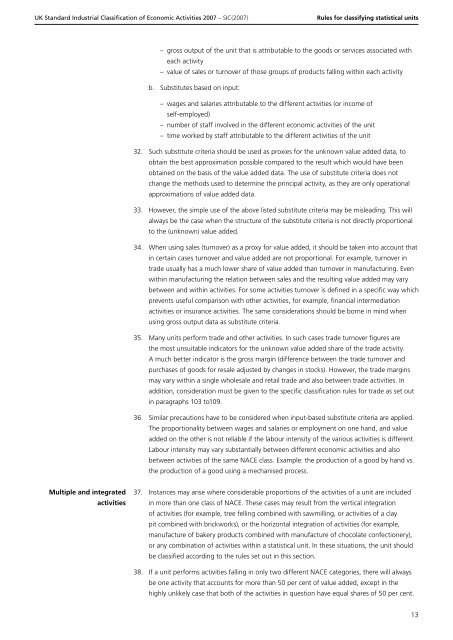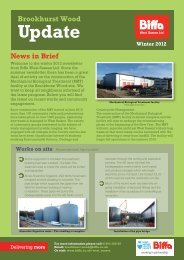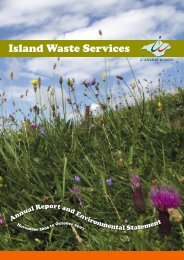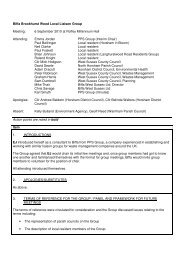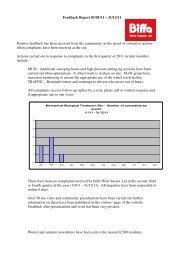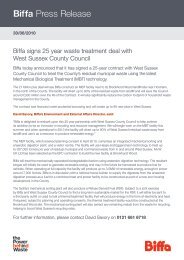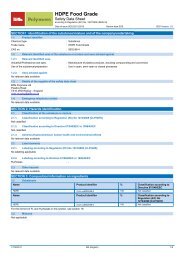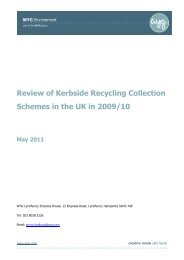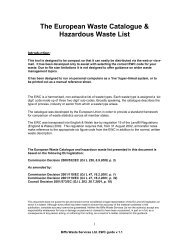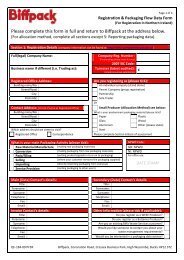detailed explanation for each SIC code - Biffa
detailed explanation for each SIC code - Biffa
detailed explanation for each SIC code - Biffa
Create successful ePaper yourself
Turn your PDF publications into a flip-book with our unique Google optimized e-Paper software.
UK Standard Industrial Classification of Economic Activities 2007 – <strong>SIC</strong>(2007)<br />
Rules <strong>for</strong> classifying statistical units<br />
– gross output of the unit that is attributable to the goods or services associated with<br />
<strong>each</strong> activity<br />
– value of sales or turnover of those groups of products falling within <strong>each</strong> activity<br />
b. Substitutes based on input:<br />
– wages and salaries attributable to the different activities (or income of<br />
self-employed)<br />
– number of staff involved in the different economic activities of the unit<br />
– time worked by staff attributable to the different activities of the unit<br />
32. Such substitute criteria should be used as proxies <strong>for</strong> the unknown value added data, to<br />
obtain the best approximation possible compared to the result which would have been<br />
obtained on the basis of the value added data. The use of substitute criteria does not<br />
change the methods used to determine the principal activity, as they are only operational<br />
approximations of value added data.<br />
33. However, the simple use of the above listed substitute criteria may be misleading. This will<br />
always be the case when the structure of the substitute criteria is not directly proportional<br />
to the (unknown) value added.<br />
34. When using sales (turnover) as a proxy <strong>for</strong> value added, it should be taken into account that<br />
in certain cases turnover and value added are not proportional. For example, turnover in<br />
trade usually has a much lower share of value added than turnover in manufacturing. Even<br />
within manufacturing the relation between sales and the resulting value added may vary<br />
between and within activities. For some activities turnover is defined in a specific way which<br />
prevents useful comparison with other activities, <strong>for</strong> example, financial intermediation<br />
activities or insurance activities. The same considerations should be borne in mind when<br />
using gross output data as substitute criteria.<br />
35. Many units per<strong>for</strong>m trade and other activities. In such cases trade turnover figures are<br />
the most unsuitable indicators <strong>for</strong> the unknown value added share of the trade activity.<br />
A much better indicator is the gross margin (difference between the trade turnover and<br />
purchases of goods <strong>for</strong> resale adjusted by changes in stocks). However, the trade margins<br />
may vary within a single wholesale and retail trade and also between trade activities. In<br />
addition, consideration must be given to the specific classification rules <strong>for</strong> trade as set out<br />
in paragraphs 103 to109.<br />
36. Similar precautions have to be considered when input-based substitute criteria are applied.<br />
The proportionality between wages and salaries or employment on one hand, and value<br />
added on the other is not reliable if the labour intensity of the various activities is different.<br />
Labour intensity may vary substantially between different economic activities and also<br />
between activities of the same NACE class. Example: the production of a good by hand vs.<br />
the production of a good using a mechanised process.<br />
Multiple and integrated<br />
activities<br />
37. Instances may arise where considerable proportions of the activities of a unit are included<br />
in more than one class of NACE. These cases may result from the vertical integration<br />
of activities (<strong>for</strong> example, tree felling combined with sawmilling, or activities of a clay<br />
pit combined with brickworks), or the horizontal integration of activities (<strong>for</strong> example,<br />
manufacture of bakery products combined with manufacture of chocolate confectionery),<br />
or any combination of activities within a statistical unit. In these situations, the unit should<br />
be classified according to the rules set out in this section.<br />
38. If a unit per<strong>for</strong>ms activities falling in only two different NACE categories, there will always<br />
be one activity that accounts <strong>for</strong> more than 50 per cent of value added, except in the<br />
highly unlikely case that both of the activities in question have equal shares of 50 per cent.<br />
13


